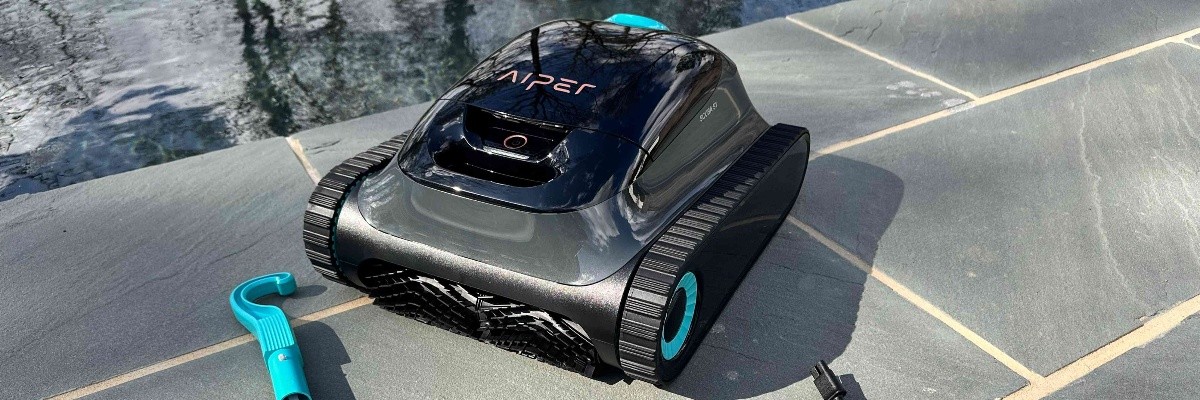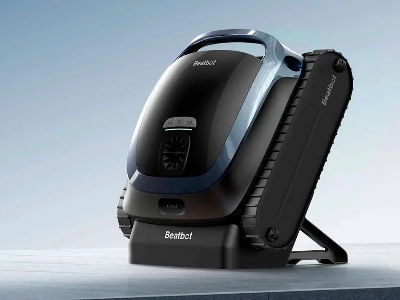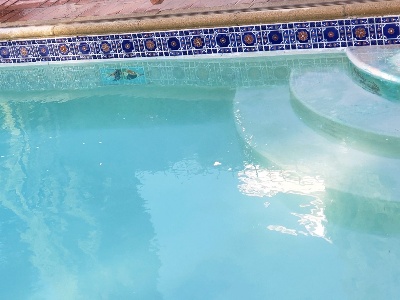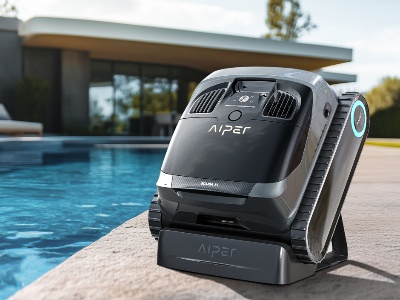Wireless pool robots are attracting more and more owners due to their ease of use, total mobility and efficiency. Free from the constraints of cables and connections, these devices offer autonomous maintenance of the bottom of your pool, while being easy to install and operate. But how do they really work? What is their autonomy, their suction capacity, their precision of movement? In this article, we review all the technical and practical aspects of the wireless pool cleaner, highlighting its advantages, how it works, its limitations, as well as the innovations offered by leading brands such as BEATBOT, Dolphin and Aiper.
Battery-powered operation and freedom of movement
The basic principle of a wireless pool cleaner is based on the integration of a rechargeable battery inside the device. This battery, often lithium-ion, allows the robot to operate completely autonomously, without a wired connection to an electrical outlet. Once submerged, the robot activates its propulsion motors, rotating brushes and suction system to clean the bottom of the pool. It moves freely in the water, often thanks to an optimised navigation algorithm that avoids redundant paths. Some models even have a built-in gyroscope to improve coverage. The average battery life varies from 60 to 120 minutes depending on the model, with charging times ranging from 4 to 8 hours. A robot like the
AquaSense 2 from BEATBOT combines this battery life with an efficient filtration system and intelligent control via a mobile application, allowing you to start a cycle remotely or customise the type of cleaning. Wireless, hassle-free, but with professional results. One of the great advantages of wireless pool robots is their ease of installation. No cables to connect, no filtration system to hook up: just place the robot in the water, switch it on and leave it to get on with its job. This ease of use makes them accessible to everyone, even to users who are not very technically minded. This makes them ideal for secondary swimming pools, holiday homes or senior users who want to simplify their life. What's more, their compact size and light weight make them easy to handle on a daily basis. Most come with a waterproof external charging station that can be installed by the pool. Some models even have an automatic recovery system that brings them back to the edge when they finish their cycle or run out of battery power. They are completely convenient: no tangled cables, no risk of electrocution, and a device that is ready to use in just a few seconds.
An intelligent but limited cleaning coverage
While wireless robots are very effective at cleaning the bottom, their ability to climb walls or reach the waterline is still limited on some models. This depends largely on the power of the battery and the traction system. Entry-level models focus on the bottom, with variable, sometimes random surface coverage. On the other hand, premium models, such as the
BEATBOT AquaSense 2 Ultra, are designed to climb walls and effectively brush the waterline, thus ensuring a complete clean. Thanks to integrated sensors, they adapt their trajectory according to the shape of the pool, avoid obstacles, and cover the entire surface without human intervention. It is important to note that, as a wireless device, the robot must manage its energy precisely. It is therefore rare to see wireless robots operate for more than two hours at a time, which can require several cycles for a large pool. However, for regular use, their efficiency is still more than sufficient.
An integrated filtration system for greater autonomy
Unlike hydraulic robots, which depend on the pool's filtration system, wireless robots have their own filter tank. This collects all the impurities sucked up: sand, leaves, insects, fine dust, etc. This tank is generally accessible from above or from the rear, and is very easy to empty. Some filters are washable with clean water, others have a quick cleaning system. The filtration fineness varies according to the model: from 100 microns (coarse suction) to 5 microns for very fine particles. Several interchangeable filters are supplied with top-of-the-range robots. Thanks to this filtration autonomy, the robot does not require the pump or the skimmers. This relieves the entire pool system and improves its longevity. In addition, a surface robot such as the
iSkim Ultra from BEATBOT can reinforce this action by capturing suspended waste, for effortless overall cleaning of the bottom and surface.
The concrete advantages of a wireless robot on a daily basis
Choosing a wireless robot means opting for a new way of managing your pool maintenance. The absence of a cable removes connection constraints, the risk of premature wear and tear and storage complications. The user gains in mobility, time and peace of mind. These robots are often lighter than their wired counterparts, and therefore easier to transport and immerse. They operate silently, their power consumption is optimised, and some models are connected to offer even more control. They are also valuable allies for above-ground or irregularly shaped pools, which are often poorly covered by conventional robots. If your priority is simplicity and speed of use, a wireless model will give you significant comfort. For optimal efficiency, simply check the proposed autonomy, filtration capacity and ability to cover the entire surface. These three criteria will enable you to choose a model that is consistent with the size of your pool and your expectations in terms of cleanliness.
Maintaining your wireless robot to extend its lifespan
Like any electronic device, a wireless pool robot requires regular maintenance to operate efficiently over time. After each cycle, rinse the filter with clean water, empty the residue and leave it to dry in the open air. Check that the brushes turn freely and that no hair or textile fibres are obstructing the mechanism. If your robot runs on a lithium-ion battery, recharge it as soon as the cycle ends, without waiting for the battery to be completely empty. Storing the appliance in the shade and in a dry place will prolong its lifespan. Avoid leaving it in the sun or in standing water when not in use. For connected models, update the firmware if the application offers this option. By following these simple steps, you can ensure that your robot will provide you with several years of optimal performance. And if you have opted for a quality model like those from BEATBOT, maintenance often comes down to a few simple steps. This means you can enjoy a reliable, autonomous device that is always ready to clean your pool. Wireless pool robots perfectly embody the modern evolution of aquatic maintenance. Their simple operation, targeted efficiency and autonomy are attracting more and more owners, who are looking for a high-performance tool without the complexity. Whether for an in-ground, above-ground, family or extra pool, these devices adapt to all configurations, while considerably lightening the cleaning tasks. The user experience is smooth, intuitive and secure, thanks to technology that works for you. And with the arrival of new-generation models such as BEATBOT's AquaSense 2 Ultra, which combines power, intelligence and freedom of movement, wireless becomes a no-brainer for those who want to combine cleanliness, comfort and simplicity. Less effort, more pleasure... and a pool that is always spotless, day after day.







